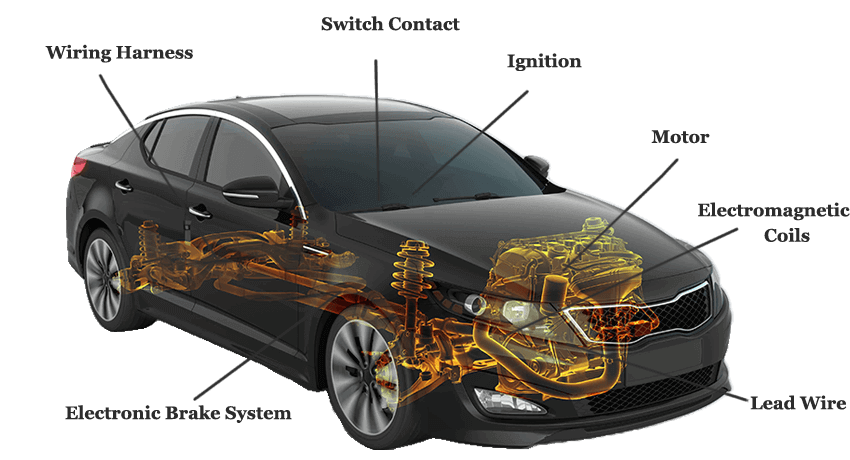5 Materials for Resistance welding Electrode
Resistance welding Yolo Materials Industry 16th, Aug 2023 15:00pm
With the rise of a large number of manufacturing companies in the automotive industry, resistance welding grew fast.
Resistance welding is a method of welding by applying pressure through an electrode, using the resistance heat generated by the electric current passing through the contact surfaces and neighboring areas of the joint.
The resistance welding electrode is a tool for the resistance welding machine to transmit welding current, welding force and heat dissipation in the welding area to the weldment. Moreover, the working conditions of resistance welding electrodes are relatively harsh.
Therefore, the materials for making electrodes are required to meet the following requirements:
High Temperature
(1) Resistance welding electrode should has sufficient high temperature hardness and strength, high recrystallization temperature.
oxidation resistance
(2) The welding electrode materials is better to have higher oxidation resistance, less tendency to form alloys with weldment materials

conductivity
(3) Suitable electrical and thermal conductivity at room temperature and high temperature is necessary.
Processing Performance
(4) Resistance welding electrode materials has good processing performance and is not easy to deform are also importanct.
5 Materials for Resistance welding Electrode
How to choose the best resistance welding electrode material? Next, Yolo first tells you 5 normal electrode materials are available.
CuCrZr (Chromium-zirconium copper)
Copper alloy material with high hardness and strength. With high temperature softening, wear resistance, good electrical conductivity.
It is the first choice of electrode material for spot welding or seam welding of low carbon steel and coated steel plate. It can also be used as electrode material for large molds and fixtures of projection welding machines, and molds for stainless steel and heat-resistant steel. There are also materials for insert/back casting electrodes.
So what is the insert resistance welding electrode? Be patient, look down first.
BeCu (Beryllium Copper)
Beryllium copper (BeCu) electrode material has high hardness, strength and softening temperature, but its conductivity is low and poor. Therefore, BeCu electrode material is suitable for welding plate parts with high pressure, as well as harder materials, such as roll welding wheels for seam welding.
At the same time, it has good elasticity and is suitable for making stud welding chucks.
W Electrode (Tungsten)

The tungsten electrode material has high hardness and the best high temperature resistance. And it has stable electrical conductivity and heat dissipation performance. Therefore, the cooling effect is good, the work life is long.
Now, tungsten are used by more and more high-standard product manufacturers as electrode materials for resistance welding. Usually 99.95% pure tungsten, tungsten-based high specific gravity alloy and tungsten-copper alloy.
Mo Electrode (Molybdenum)

Molybdenum electrodes have high hardness, high melting point, and superior high-temperature performance, and are suitable for welding non-ferrous metals such as copper, aluminum, and nickel. For example, the copper braid of the switch, the welding of the metal sheet.
Tungsten Insert Copper Electrode (NDB electrode)

Tungsten inserts copper electrodes are connected in one piece by NDB (Non-Defective Bonding) in a vacuum environment, and the head is W or WLa20 electrodes embedded back-casting with CuCrZr or oxygen-free copper (OFC) electrodes. The NDB electrode can concentrate the heat energy on the workpiece to be welded to the greatest extent, so as to form an efficient nugget.
There are 4 advantages of NDB electrode for resistance welding:
- The ends of the electrodes have been densified to have a high-density, uniform internal tissue structure.
- It has stable electrical conductivity and heat dissipation.
- The end of the electrode can be continuously cooled to reduce the heat load of the electrode head at the end, thereby increasing the service life of the electrode and reducing production costs.
- Most importantly, through NDB technology, it is integrally formed in a vacuum environment without any solder or gap, so that the two materials are seamlessly combined.
Our NDB electrodes are used in the welding of automobile wires, motors, switch contacts, ignition coils, brake electronic systems, electromagnetic coils, sensor leads. Besides, welding copper wires, copper sheets, and copper braided wire contacts.
Therefore, the tungsten back-casting electrode is better than the overall pure tungsten electrode and pure molybdenum electrode in the application of high temperature and high current.

Get Price Now
Tungsten Electrode Needle
with Factory Direct Price


